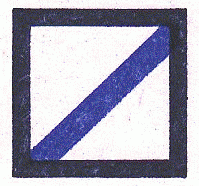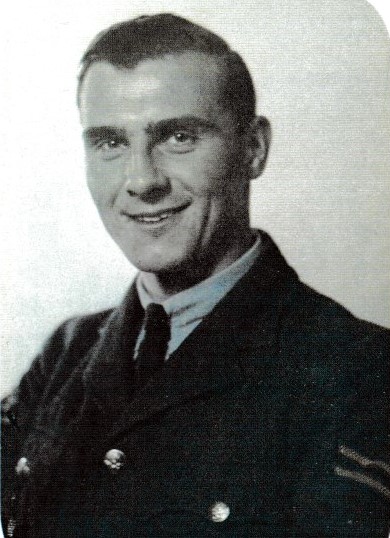
The following account of Ron Plater’s experiences is edited from letters he wrote to the author of this website. He gave his kind permission for it to be presented here. The letters were written in 2010 and 2011, beginning shortly after Ron’s 90th birthday in 2010.
I volunteered to join the R.A.F. in May of 1939 but was not called up until after the war broke out in September. I joined at No. 1 Recruiting Centre at Uxbridge and did some square bashing, where I feared the Flight Sergeant. Little did I think I would hold that same rank in a few years time, and I wonder if I was feared in the same way!
I did my technical training at Morecambe, Lancashire, spending 11 months training as an Aircraft Fitter. I wanted the best training that the R.A.F. could offer.
After serving at Kinloss I was posted to No. 22 O.T.U. Actually, I was posted to No. 22 O.T.U. before the aerodrome, near Stratford on Avon, was completed. Rather than go on “fatigues” I opted for the M.T. Section, as I thought at that time it would serve me good for when I came out. I re-mustered as an M.T. Fitter, taking a Central Trade Test board at Hartwell, then an R.A.F. establishment. I did not realise then that I would become Assistant Chief Engineer at one of the National Bus companies!
After this, I was posted to North Africa with 153 Squadron (Beaufighters). I went out to North Africa as a Corporal, on a Greek ship called the Nea Hellas, with a friend of the same rank. One morning, we were then in the Bay of Biscay, I woke up to see him virtually GREEN, and it was not long before I had the same feeling! So I made my way up to the open deck and it was there that I was violently sick, right over the rail. To my horror it was all received by the fellows on the deck below! I returned to the bulkhead and had to laugh at the spectacle I had just witnessed. It was one of those experiences!
The Beaufighter aircraft of 153 Squadron were fitted, in the nose, with a device for seeing in the dark – no, not carrots as recommended by “Cat’s Eyes” Cunningham!
While I was in North Africa the R.A.F. decided to form beach units because the invasion of Sicily was planned. To give cover over the beach-head aircraft could only operate for 8 minutes without having to return to North Africa to re-fuel and re-arm. So the Air Ministry had the idea that if they sent in an invasion unit, when the first aerodrome was taken, aircraft could re-fuel, re-arm and give immediate cover. So l was one of those “bods” selected. The beach unit I joined in North Africa was an Auxiliary Embarkation Unit.
We were attached to the Americans and embarked for Sicily on an American L.S.T. (Landing Ship Tank) at Arzew, near Oran. We landed at Scoglitti. I still have the original map! (It’s one of my prized possessions, together with an Italian bayonet which I retrieved from an arms dump in Sicily and, of course, my Commando dagger with which we were all issued for the invasion of Normandy). It was quite an experience to see, for the first time, enemy territory framed in the open doors of the landing ship.
That night I drove a truck all night with ammo and a lad with me who was dead-scared! I remember striding into some old people’s house and them offering me some food, which I took, as I must have been a bit hungry. It did not occur to me that we were the enemy to them. I slept on the shore that day.
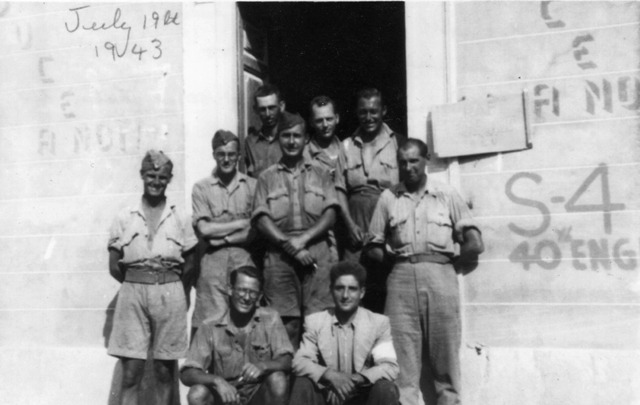
Ron Plater is on the left.
After the successful invasion of Sicily we came back to North Africa, re-equipped and went in on the invasion of Salerno, Italy. That was the worst of the three landings I took part in. At one stage we were told that if we retreated to the beachhead it would be of no avail as all the landing craft had orders to pull out to sea that night. I got my eardrums damaged through the heavy gunfire. During that night each gun, I was told, fired over 300 rounds. After the war I went to my doctor who subsequently sent me for a hearing test. This resulted in me finally getting a small War Pension, as now I have to wear hearing aids in both ears.
During my time at Salerno I contracted jaundice and was eventually evacuated by lifeboat to the S.S. Somersetshire, a hospital ship. The beds were on supports at each end, so that they swung sideways to counteract the motion of the ship. Back in North Africa, I spent a few weeks in a tented hospital before being transported to Algiers by “cattle truck”.
When I met up with some of my unit in the camp at Algiers and learned that they were going back to England for the Second Front, I sorted out my old C.O. (Commanding Officer), and stated I wanted to go back with them as I was now fit and well. He said he would see what he could do. I got on very well with him, and I think he relied on me a bit. So it was not long before my name was for posting to England, and he promoted me to Sergeant. One thing has just come to me; one of my lads spotted my toolbox and decided, I think, he would like it. It was a tool box which I had salvaged from one of the landing craft and I had made up the contents. He decided to take it. However, when I saw it, I pulled my rank and stated he must hand it over, which he quite rightly did!!
After an eventful return journey, we docked at Liverpool. I returned home and got married! We got engaged before I went out to North Africa. I said, ” When I get back we will get married.” Little did I think it would be so soon, and for the reason of going on the Second Front. We were married on 20th December 1943. (Sadly, my dear wife died of cancer in 1986.) It was after we had been married and I was home on leave, at my parents home, that one evening the front door bell went. I answered it and it was a Telegram boy for me. He had a telegram, “Leave extended a further 7 days”. Did I jump for joy!!
The unit I joined for Normandy was 108 Beach Flight, No. 4 R.A.F. Beach Squadron. I landed on Gold Beach, Jig section, Green (near Arromanches). The beaches were split up into sections and then colours. You will appreciate it was a rather long and vast area.
We had a wet landing. I was in charge of a marching party, as we were split up over several landing craft (something the R.A.F. had learnt after the other invasions). While walking along the beach, bodies were washed up by the tide from the previous advance and I remember we marched along a lane near Le Hamel. Here I first saw a dead German.
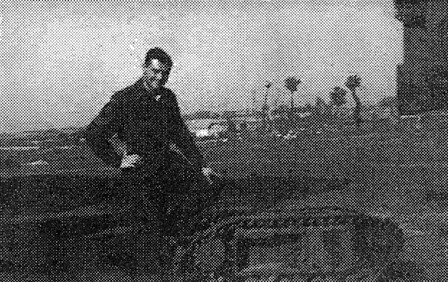
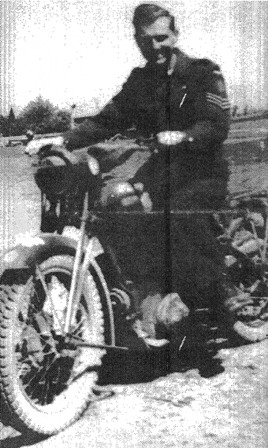
After “living” in slit trenches for a few weeks we moved into a house in St. Côme de Fresné. We stayed here until the beachhead closed. Then, back to Peacehaven, England where l was posted to a Forward Aircraft Repair Unit, No. 151. So to France, Belgium, Germany and back to the U.K. for demob. It was when I was in Germany with 151 Aircraft Repair Unit that I was finally promoted to Flight Sergeant.
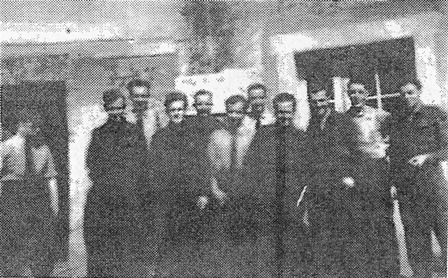
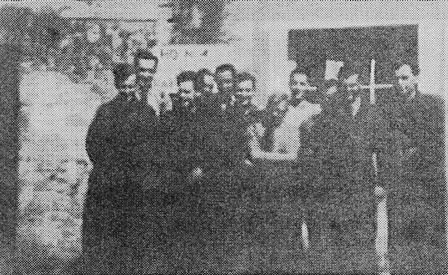
When I go back to France now I meet up with many friends I have made. I stay in the same building that we occupied in June 1944 and sleep directly beneath were I slept in 1944, as it is now holiday accommodation!
Ron rediscovered the house, at 5 Route de Bayeux, St. Côme de Fresné, in 1984 with the help of a BBC TV crew who were filming the “Songs of Praise” programme which marked the 40th anniversary of D-Day. From then on he maintained close links with the local community.
In 1993 Ron produced a commemorative plaque and album to be displayed at the house. It was received by Catherine and Jean-Paul Le Petit who now own the building and provide bed & breakfast accommodation (chambre d’hôte). Among the many guests at the ceremony, both British and French, were the Mayor of St. Côme de Fresné, the deputy Mayor of Arromanches and the Director of the D-Day Museum at Arromanches.
The plaque features Ron Plater’s own cap badge at the top. The album contains copies of photographs and the Operations Record Book of No. 4 R.A.F. Beach Squadron, plus a page dedicated to LAC James Maxfield, the unit’s only fatal casualty.
The plaque and album can be viewed by arrangement with the current owners of the house, M. et Mme Le Petit-Paturel, La Poterie, 5 Route de Bayeux, 14960 St. Côme de Fresné. The museum at Arromanches also holds a copy of the album.
Ron Plater was a long-time member and former treasurer of the D-Day and Normandy Fellowship and a few words he wrote in 1994 appear in the D-Day Memories section of their website. He died in 2017 two weeks before his 97th birthday.
